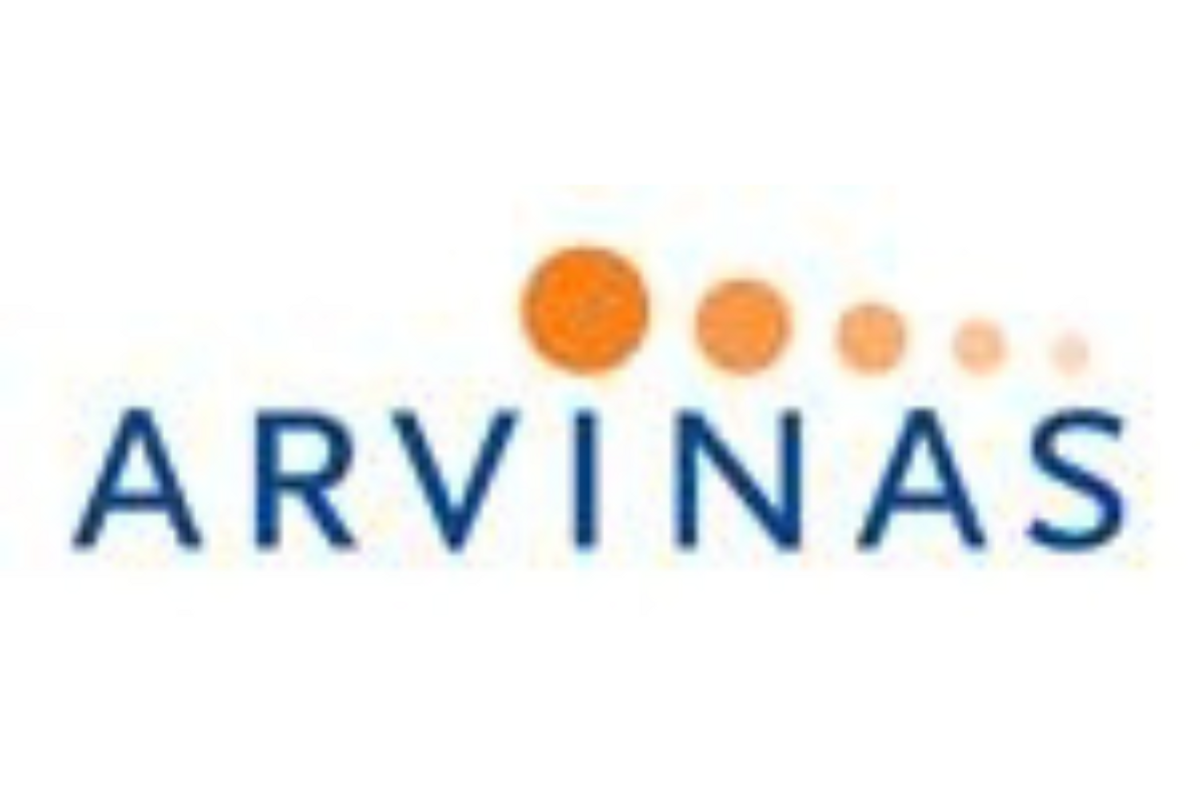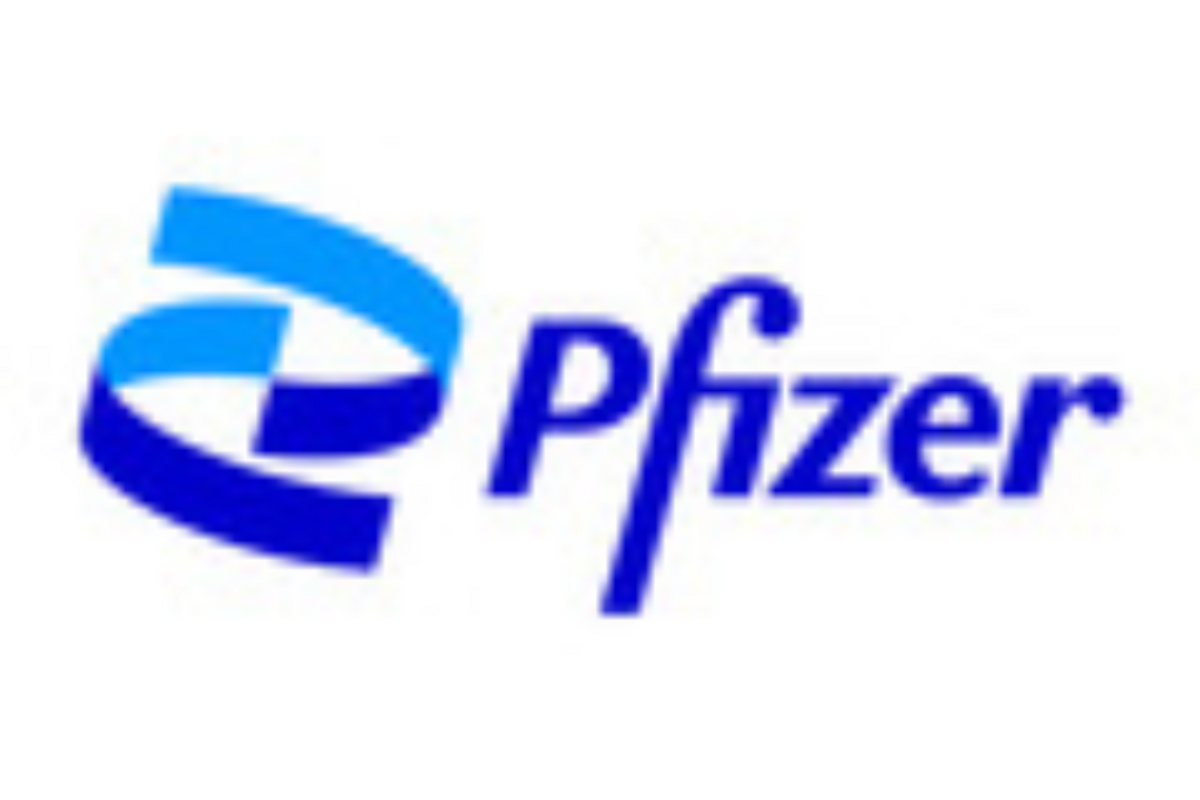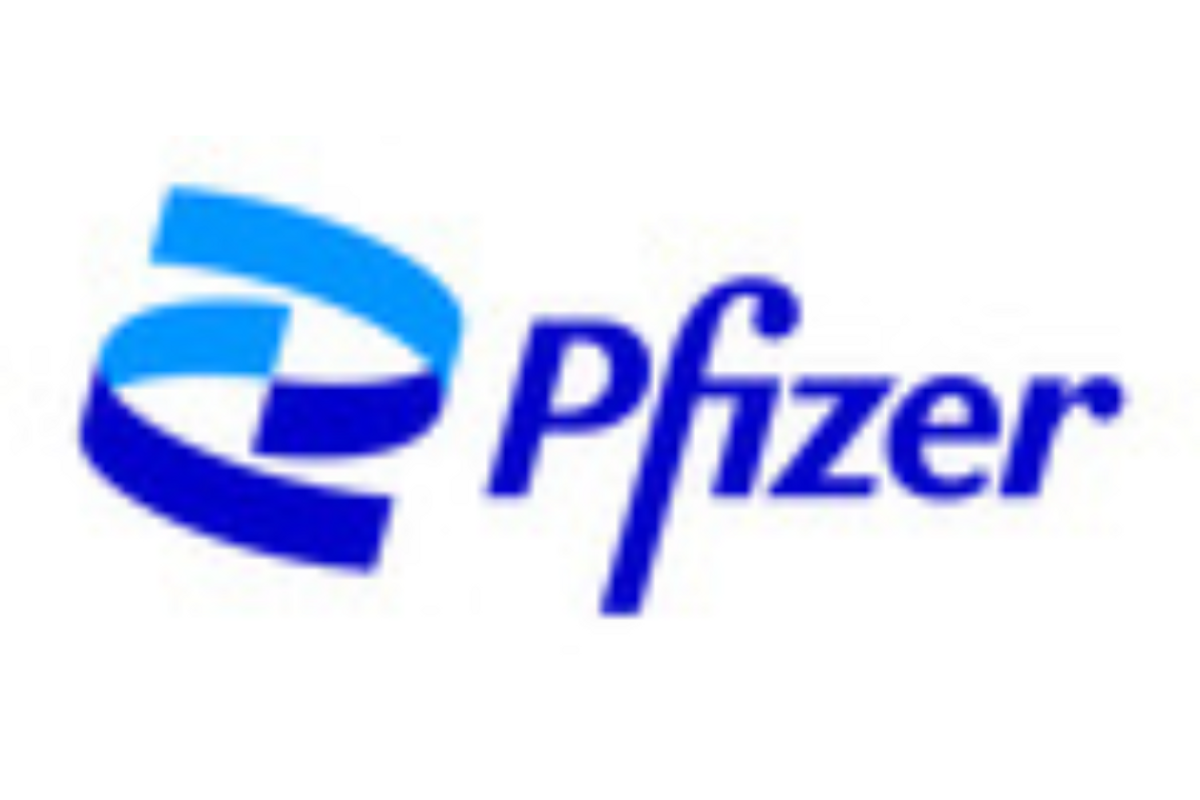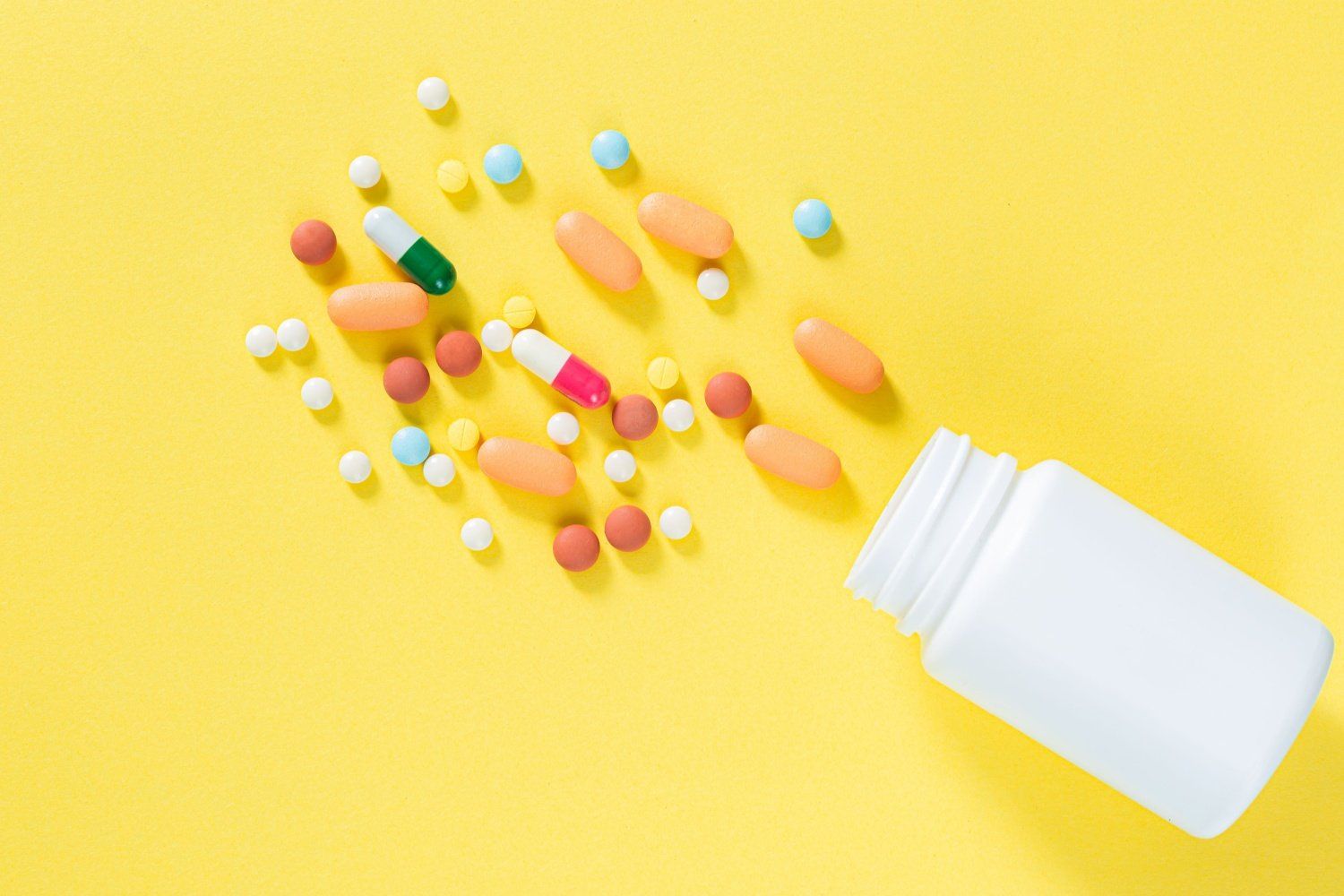sNDAs are supported by results from the PHAROS trial, evaluating the combination in BRAF V600E-mutant metastatic non-small cell lung cancer
Pfizer Inc. (NYSE:PFE) announced today that the U.S. Food and Drug Administration (FDA) has accepted for review the Supplemental New Drug Applications (sNDAs) for BRAFTOVI ® (encorafenib) + MEKTOVI ® (binimetinib) for patients with metastatic non-small cell lung cancer (NSCLC) with a BRAF V600E mutation, as detected by an FDA-approved test.
The Prescription Drug User Fee Act (PDUFA) goal date for a decision by the FDA is in Fourth-Quarter 2023 for the sNDAs. In the U.S., BRAFTOVI + MEKTOVI is currently approved for the treatment of patients with unresectable or metastatic melanoma with a BRAF V600E or V600K mutation, as detected by an FDA-approved test. BRAFTOVI is also approved, in combination with cetuximab, for the treatment of adult patients with metastatic colorectal cancer (CRC) with a BRAF V600E mutation, as detected by an FDA-approved test, after prior therapy.
"For more than a decade, Pfizer Oncology has been at the forefront of bringing biomarker-driven treatment options to patients with cancer. Since their initial regulatory approvals, BRAFTOVI and MEKTOVI have helped improve outcomes in their respective indications of BRAF -mutated metastatic melanoma and BRAF -mutated metastatic colorectal cancer," said Chris Boshoff, M.D., Ph.D., Chief Development Officer, Oncology and Rare Disease, Pfizer Global Product Development. "Through our comprehensive development program, the BRAFTOVI and MEKTOVI combination has shown the potential to help more patients, such as those living with BRAF V600E-mutant non-small cell lung cancer. These sNDAs build on Pfizer's long heritage of meeting the diverse needs of people with NSCLC, and we look forward to working with the FDA on their review of these applications."
These sNDAs are supported by results from the PHAROS trial ( NCT03915951 ), an open-label, multicenter, non-randomized, Phase 2 study (n=98) to determine the safety, tolerability, and efficacy of BRAFTOVI given in combination with MEKTOVI in patients with BRAF V600E-mutant metastatic NSCLC. PHAROS met its primary endpoint of objective response rate. Detailed results from the PHAROS study will be presented at an upcoming scientific congress.
About Non-Small Cell Lung Cancer (NSCLC)
Lung cancer is the second most common type of cancer and the number one cause of cancer-related death around the world. 1 In 2023, the American Cancer Society estimates there will be about 238,340 new cases of lung cancer diagnosed in the U.S. 2 NSCLC accounts for approximately 80-85% of all lung cancers. 3
Some lung cancers are linked to acquired genetic abnormalities. For instance, a BRAF V600E mutation occurs in approximately 2% of NSCLC cases 4 and stimulates tumor cell growth and proliferation by altering the MAP kinase (MAPK) signaling pathway. Targeting components of this pathway could potentially inhibit unchecked tumor growth and proliferation caused by BRAF mutations. 5
Precision medicine is increasingly being developed for NSCLC patients with genetic changes, such as BRAF mutations, that can be detected using biomarker tests. 6,7 Advances in targeted therapy have been associated with significant improvements in population-level NSCLC mortality in recent years. 8
About PHAROS
PHAROS ( NCT03915951 ) is an open-label, multicenter, non-randomized, Phase 2 study to determine the safety, tolerability, and efficacy of BRAFTOVI given in combination with MEKTOVI in 98 patients with BRAF V600E-mutant metastatic NSCLC. The primary endpoint is objective response rate, based on independent radiologic review (per RECIST v1.1); secondary objectives will evaluate additional efficacy endpoints and safety. Duration of response is a key secondary endpoint. The trial is conducted across 53 sites in: Italy (5 sites), the Netherlands (2 sites), South Korea (3 sites), Spain (4 sites), and the U.S. (39 sites).
About BRAFTOVI + MEKTOVI
BRAFTOVI is an oral small molecule BRAF kinase inhibitor and MEKTOVI is an oral small molecule MEK inhibitor which target key proteins in the MAPK signaling pathway (RAS-RAF-MEK-ERK). Inappropriate activation of this pathway has been shown to occur in many cancers, including melanoma, CRC, and NSCLC.
In 2018, the FDA approved BRAFTOVI + MEKTOVI in combination for patients with unresectable or metastatic melanoma with a BRAF V600E or V600K mutation, as detected by an FDA-approved test. The approval was based on COLUMBUS, a randomized, active-controlled, open-label, Phase 3 trial.
In 2020, BRAFTOVI was FDA-approved, in combination with cetuximab, for the treatment of adults with metastatic CRC with a BRAF V600E mutation, as detected by an FDA-approved test. The approval was based on results from the BEACON CRC trial.
Pfizer has exclusive rights to BRAFTOVI and MEKTOVI in the U.S., Canada, and all countries in the Latin America, Africa, and Middle East regions. Ono Pharmaceutical Co. Ltd. has exclusive rights to commercialize both products in Japan and South Korea, Medison has exclusive rights in Israel, and Pierre Fabre has exclusive rights in all other countries, including Europe and Asia-Pacific (excluding Japan and South Korea).
INDICATIONS AND USAGE
BRAFTOVI ® (encorafenib) and MEKTOVI ® (binimetinib) are kinase inhibitors indicated for use in combination for the treatment of patients with unresectable or metastatic melanoma with a BRAF V600E or V600K mutation as detected by an FDA-approved test.
BRAFTOVI is indicated, in combination with cetuximab, for the treatment of adult patients with metastatic colorectal cancer (CRC) with a BRAF V600E mutation, as detected by an FDA-approved test, after prior therapy.
Limitations of Use : BRAFTOVI is not indicated for treatment of patients with wild-type BRAF melanoma or wild-type BRAF CRC.
IMPORTANT SAFETY INFORMATION
This information applies to the safety of BRAFTOVI when used in combination with either MEKTOVI or cetuximab.
WARNINGS AND PRECAUTIONS
New Primary Malignancies, cutaneous and non-cutaneous malignancies can occur with BRAFTOVI. BRAFTOVI may promote malignancies associated with activation of RAS through mutation or other mechanisms. Perform dermatopathologic evaluations prior to initiating treatment, every 2 months during treatment, and for up to 6 months following discontinuation of treatment. Manage suspicious skin lesions with excision and dermatopathologic evaluation. Dose modification is not recommended for new primary cutaneous malignancies. Monitor patients receiving BRAFTOVI for signs and symptoms of non-cutaneous malignancies. Discontinue BRAFTOVI for RAS mutation-positive non-cutaneous malignancies.
- BRAF-mt metastatic melanoma (COLUMBUS study): Cutaneous squamous cell carcinoma (cuSCC), including keratoacanthoma (KA), occurred in 2.6% and basal cell carcinoma occurred in 1.6% of patients receiving BRAFTOVI with MEKTOVI. Median time to first occurrence of cuSCC/KA was 5.8 months
- BRAF-mt metastatic CRC (BEACON CRC study): cuSCC, including KA, occurred in 1.4% of patients with CRC, and new primary melanoma occurred in 1.4% of patients who received BRAFTOVI with cetuximab
Tumor Promotion in BRAF Wild-Type Tumors: In vitro experiments have demonstrated paradoxical activation of MAP-kinase signaling and increased cell proliferation in BRAF wild-type cells exposed to BRAF inhibitors. Confirm evidence of BRAF V600E or V600K mutation using an FDA-approved test prior to initiating BRAFTOVI.
Hemorrhage: Hemorrhage can occur when BRAFTOVI is administered in combination with MEKTOVI or cetuximab. Withhold, reduce dose, or permanently discontinue based on severity of adverse reaction.
- BRAF-mt metastatic melanoma (COLUMBUS study): Hemorrhage occurred in 19% of patients receiving BRAFTOVI with MEKTOVI and Grade 3 or higher hemorrhage occurred in 3.2% of patients. The most frequent hemorrhagic events were gastrointestinal, including rectal hemorrhage (4.2%), hematochezia (3.1%), and hemorrhoidal hemorrhage (1%). Fatal intracranial hemorrhage in the setting of new or progressive brain metastases occurred in 1.6% of patients
- BRAF-mt metastatic CRC (BEACON CRC study): Hemorrhage occurred in 19% of patients receiving BRAFTOVI with cetuximab; Grade 3 or higher hemorrhage occurred in 1.9% of patients, including fatal gastrointestinal hemorrhage in 0.5% of patients. The most frequent hemorrhagic events were epistaxis (6.9%), hematochezia (2.3%), and rectal hemorrhage (2.3%)
Uveitis: Uveitis, including iritis and iridocyclitis, has been reported in patients treated with BRAFTOVI with MEKTOVI. Assess for visual symptoms at each visit. Perform an ophthalmological evaluation at regular intervals and for new or worsening visual disturbances, and to follow new or persistent ophthalmologic findings. Withhold, reduce dose, or permanently discontinue based on severity of adverse reaction. In the COLUMBUS study, uveitis, including iritis and iridocyclitis, was reported in 4% of patients treated with BRAFTOVI with MEKTOVI.
QT Prolongation: BRAFTOVI is associated with dose-dependent QTc interval prolongation in some patients. Monitor patients who already have or who are at significant risk of developing QTc prolongation, including patients with known long QT syndromes, clinically significant bradyarrhythmias, severe or uncontrolled heart failure and those taking other medicinal products associated with QT prolongation. Correct hypokalemia and hypomagnesemia prior to and during BRAFTOVI administration. Withhold, reduce dose, or permanently discontinue for QTc >500 ms.
- BRAF-mt metastatic melanoma (COLUMBUS study): An increase in QTcF to >500 ms was measured in 0.5% (1/192) of patients who received BRAFTOVI in combination with MEKTOVI
Embryo-Fetal Toxicity: Both BRAFTOVI and MEKTOVI can cause fetal harm when administered to a pregnant woman. BRAFTOVI can render hormonal contraceptives ineffective.
- BRAF-mt metastatic melanoma (COLUMBUS study): Nonhormonal contraceptives should be used during treatment and for at least 30 days after the final dose for patients taking BRAFTOVI + MEKTOVI
- BRAF-mt metastatic CRC (BEACON CRC study): Advise females of reproductive potential to use effective nonhormonal contraception during treatment with BRAFTOVI and for 2 weeks after the final dose
BRAFTOVI as a Single Agent is associated with increased risk of certain adverse reactions compared to when BRAFTOVI is used with MEKTOVI.
- BRAF-mt metastatic melanoma (COLUMBUS study): Grades 3 or 4 dermatologic reactions occurred in 21% of patients receiving BRAFTOVI as a single agent compared to 2% in patients receiving the combination of BRAFTOVI with MEKTOVI
- If MEKTOVI is temporarily interrupted or permanently discontinued, reduce the dose of BRAFTOVI as recommended
Risks Associated with Combination Treatment
- In BRAF-mt metastatic melanoma (COLUMBUS study), BRAFTOVI is used in combination with MEKTOVI so refer to the prescribing information for MEKTOVI for additional risk information
- In BRAF-mt metastatic CRC (BEACON CRC study), BRAFTOVI is used in combination with cetuximab so refer to the prescribing information for cetuximab for additional risk information
Additional WARNINGS and PRECAUTIONS for MEKTOVI When Used With BRAFTOVI in BRAF-mt Metastatic Melanoma (COLUMBUS study)
Cardiomyopathy, manifesting as left ventricular dysfunction associated with symptomatic or asymptomatic decreases in ejection fraction, has been reported in patients. Patients with cardiovascular risk factors should be monitored closely. Withhold, reduce dose, or permanently discontinue based on severity of adverse reaction.
- Assess left ventricular ejection fraction (LVEF) by echocardiogram or multi-gated acquisition (MUGA) scan prior to initiating treatment, 1 month after initiating treatment, and then every 2 to 3 months during treatment
- The safety has not been established in patients. In with a baseline ejection fraction that is either below 50% or below the institutional lower limit of normal (LLN)
- BRAF-mt metastatic melanoma (COLUMBUS study): evidence of cardiomyopathy occurred in 7% and Grade 3 left ventricular dysfunction occurred in 1.6% of patients. receiving MEKTOVI with BRAFTOVI. The median time to first occurrence of left ventricular dysfunction (any grade) was 3.6 months. Cardiomyopathy resolved in 87% of patients.
Venous Thromboembolism (VTE): VTE occurred in 6% of patients with BRAF-mt metastatic melanoma (COLUMBUS study) , including 3.1% of patients who developed pulmonary embolism. Withhold, reduce dose, or permanently discontinue based on severity of adverse reaction.
Other Ocular Toxicities:
- Serous retinopathy occurred in 20% of patients receiving MEKTOVI with BRAFTOVI; 8% were retinal detachment and 6% were macular edema. Symptomatic serous retinopathy occurred in 8% of patients with no cases of blindness. The median time to onset of the first event of serous retinopathy (all grades) was 1.2 months.
- Retinal vein occlusion (RVO) is a known class-related adverse reaction of MEK inhibitors and may occur in patients receiving MEKTOVI with BRAFTOVI. In BRAF-mt metastatic melanoma (COLUMBUS study) , 1 patient experienced RVO (0.1%) in the MEKTOVI with BRAFTOVI group (n=690).
- The safety of MEKTOVI has not been established in patients with a history of RVO or current risk factors for RVO including uncontrolled glaucoma or a history of hyperviscosity or hypercoagulability syndromes
- Perform ophthalmological evaluation for patient-reported acute vision loss or other visual disturbance within 24 hours. Permanently discontinue MEKTOVI in patients with documented RVO
Interstitial Lung Disease (ILD): ILD, including pneumonitis occurred in 0.3% (2 of 690 patients) with BRAF-mt metastatic melanoma receiving MEKTOVI with BRAFTOVI. Assess new or progressive unexplained pulmonary symptoms or findings for possible ILD. Withhold, reduce dose, or permanently discontinue based on severity of adverse reaction.
Hepatotoxicity: Hepatotoxicity can occur when MEKTOVI is taken with BRAFTOVI. Monitor liver laboratory tests before initiation of MEKTOVI, monthly during treatment, and as clinically indicated. Withhold, reduce dose, or permanently discontinue based on severity of adverse reaction.
- BRAF-mt metastatic melanoma (COLUMBUS study): The incidence of Grade 3 or 4 increases in liver function laboratory tests in patients receiving MEKTOVI with BRAFTOVI was 6% for alanine aminotransferase (ALT), 2.6% for aspartate aminotransferase (AST), and 0.5% for alkaline phosphatase. No patient experienced Grade 3 or 4 serum bilirubin elevation
Rhabdomyolysis: Rhabdomyolysis can occur when MEKTOVI is taken with BRAFTOVI. Monitor creatine phosphokinase and creatinine levels prior to initiating MEKTOVI, periodically during treatment, and as clinically indicated. Withhold, reduce dose, or permanently discontinue based on severity of adverse reaction.
- BRAF-mt metastatic melanoma (COLUMBUS study): Elevation of laboratory values of serum CPK occurred in 58% of patients receiving MEKTOVI with BRAFTOVI. Rhabdomyolysis was reported in 0.1% (1 of 690 patients) with BRAF mutation-positive melanoma receiving MEKTOVI with BRAFTOVI
ADVERSE REACTIONS
BRAF-mt Metastatic Melanoma (COLUMBUS study)
- Most common adverse reactions (≥ 20%, all grades) for patients receiving BRAFTOVI and MEKTOVI compared to vemurafenib were fatigue (43% vs 46%), nausea (41% vs 34%), diarrhea (36% vs 34%), vomiting (30% vs 16%), abdominal pain (28% vs 16%), arthralgia (26% vs 46%), myopathy (23% vs 22%), hyperkeratosis (23% vs 49%), rash (22% vs 53%), headache (22% vs 20%), constipation (22% vs 6%), visual impairment (20% vs 4%), serous retinopathy/RPED (20% vs 2%)
- Other clinically important adverse reactions occurring in
- Most common laboratory abnormalities (≥ 20%, all grades) for BRAFTOVI with MEKTOVI compared to vemurafenib included increased creatinine (93% vs 92%), increased CPK (58% vs 3.8%), increased gamma glutamyl transferase (GGT) (45% vs 34%), anemia (36% vs 34%), increased ALT (29% vs 27%), hyperglycemia (28% vs 20%), increased AST (27% vs 24%), and increased alkaline phosphatase (21% vs 35%)
BRAF-mt Metastatic CRC (BEACON CRC study)
- Most common adverse reactions (≥25%, all grades) in patients receiving BRAFTOVI with cetuximab compared to irinotecan with cetuximab or FOLFIRI with cetuximab (control) were fatigue (51% vs 50%), nausea (34% vs 41%), diarrhea (33% vs 48%), dermatitis acneiform (32% vs 43%), abdominal pain (30% vs 32%), decreased appetite (27% vs 27%), arthralgia (27% vs 3%), and rash (26% vs 26%)
- Other clinically important adverse reactions occurring in
- Most common laboratory abnormalities (≥20%, all grades) in patients receiving BRAFTOVI with cetuximab compared to irinotecan with cetuximab or FOLFIRI with cetuximab (control) were anemia (34% vs 48%) and lymphopenia (24% vs 35%)
DRUG INTERACTIONS With BRAFTOVI When Used in Combination With Either MEKTOVI or Cetuximab
- Avoid coadministration of BRAFTOVI with strong or moderate CYP3A4 inhibitors (including grapefruit juice) or CYP3A4 inducers and use caution with sensitive CYP3A4 substrates. Avoid coadministration of BRAFTOVI with hormonal contraceptives.
- Modify BRAFTOVI dose if coadministration with a strong or moderate CYP3A4 inhibitor cannot be avoided.
- Avoid coadministration of BRAFTOVI with drugs known to prolong QT/QTc interval.
- Dose reductions of drugs that are substrates of OATP1B1, OATP1B3, or BCRP may be required when used concomitantly with BRAFTOVI.
Lactation: Advise women not to breastfeed during treatment with BRAFTOVI and for 2 weeks after final dose.
Infertility: Advise males of reproductive potential that BRAFTOVI may impair fertility.
For BRAF-mt metastatic melanoma, see full Prescribing Information and Medication Guide for BRAFTOVI and full Prescribing Information and Patient Information for MEKTOVI. See full Prescribing Information for BRAFTOVI and for MEKTOVI for dose modifications for adverse reactions.
For BRAF-mt metastatic CRC, see full Prescribing Information and Medication Guide for BRAFTOVI. See full Prescribing Information for BRAFTOVI for dose modifications for adverse reactions. Refer to cetuximab prescribing information for recommended dosing and safety information.
Please see full Prescribing Information for BRAFTOVI and full Prescribing Information for MEKTOVI.
About Pfizer Oncology
At Pfizer Oncology, we are committed to advancing medicines wherever we believe we can make a meaningful difference in the lives of people living with cancer. Today, we have an industry-leading portfolio of 24 approved innovative cancer medicines and biosimilars across more than 30 indications, including breast, genitourinary, colorectal, blood and lung cancers, as well as melanoma.
About Pfizer: Breakthroughs That Change Patients' Lives
At Pfizer, we apply science and our global resources to bring therapies to people that extend and significantly improve their lives. We strive to set the standard for quality, safety and value in the discovery, development and manufacture of health care products, including innovative medicines and vaccines. Every day, Pfizer colleagues work across developed and emerging markets to advance wellness, prevention, treatments and cures that challenge the most feared diseases of our time. Consistent with our responsibility as one of the world's premier innovative biopharmaceutical companies, we collaborate with health care providers, governments and local communities to support and expand access to reliable, affordable health care around the world. For more than 170 years, we have worked to make a difference for all who rely on us. We routinely post information that may be important to investors on our website at www.Pfizer.com . In addition, to learn more, please visit us on www.Pfizer.com and follow us on Twitter at @Pfizer and @Pfizer News , LinkedIn , YouTube and like us on Facebook at Facebook.com/Pfizer .
DISCLOSURE NOTICE: The information contained in this release is as of April 4, 2023. Pfizer assumes no obligation to update forward-looking statements contained in this release as the result of new information or future events or developments.
This release contains forward-looking information about a potential new indication for BRAFTOVI ® (encorafenib) + MEKTOVI ® (binimetinib) for the treatment of patients with metastatic non-small cell lung cancer (NSCLC) with a BRAF V600E mutation (the "potential indication"), including its potential benefits, that involves substantial risks and uncertainties that could cause actual results to differ materially from those expressed or implied by such statements. Risks and uncertainties include, among other things, the uncertainties inherent in research and development, including the ability to meet anticipated clinical endpoints, commencement and/or completion dates for our clinical trials, regulatory submission dates, regulatory approval dates and/or launch dates, as well as the possibility of unfavorable new clinical data and further analyses of existing clinical data; uncertainties regarding the commercial success of BRAFTOVI and MEKTOVI; the risk that clinical trial data are subject to differing interpretations and assessments by regulatory authorities; whether regulatory authorities will be satisfied with the design of and results from our clinical studies; whether and when any applications for the potential indication may be filed with regulatory authorities in any other jurisdictions; whether and when the FDA will approve the sNDAs for the potential indication and whether and when regulatory authorities in any jurisdictions may approve any such applications that may be pending or filed for BRAFTOVI and MEKTOVI , which will depend on myriad factors, including making a determination as to whether the products' benefits outweigh their known risks and determination of the products' efficacy and, if approved, whether BRAFTOVI and MEKTOVI will be commercially successful; decisions by regulatory authorities regarding labeling, manufacturing processes, safety and/or other matters that could affect the availability or commercial potential of BRAFTOVI and MEKTOVI, including the potential indication; uncertainties regarding the impact of COVID-19 on Pfizer's business, operations and financial results; and competitive developments.
A further description of risks and uncertainties can be found in Pfizer's Annual Report on Form 10-K for the fiscal year ended December 31, 2022 and in its subsequent reports on Form 10-Q, including in the sections thereof captioned "Risk Factors" and "Forward-Looking Information and Factors That May Affect Future Results," as well as in its subsequent reports on Form 8-K, all of which are filed with the U.S. Securities and Exchange Commission and available at www.sec.gov and www.pfizer.com .
______________________________
1 World Health Organization. International Agency for Research on Cancer. GLOBOCAN 2020: Lung cancer fact sheet. Updated December 2020. Accessed February 2, 2023. https://gco.iarc.fr/today/data/factsheets/cancers/15-Lung-fact-sheet.pdf
2 American Cancer Society. Key statistics for lung cancer. Updated February 14, 2022. Accessed February 2, 2023. https://www.cancer.org/cancer/lung-cancer/about/key-statistics.html
3 American Cancer Society. What is lung cancer? Updated October 1, 2019. Accessed February 2, 2023. https://www.cancer.org/cancer/lung-cancer/about/what-is.html
4 American Lung Association. BRAF and lung cancer. Updated November 17, 2022. Accessed February 2, 2023. https://www.lung.org/lung-health-diseases/lung-disease-lookup/lung-cancer/symptoms-diagnosis/biomarker-testing/braf
5 Lieu CH, Corcoran RB, Overman MJ. Integrating biomarkers and targeted therapy into colorectal cancer management. Am Soc Clin Oncol Educ Book . 2019;39:207-215. doi: 10.1200/EDBK_240839
6 Planchard D, Popat S, Kerr K, et al. Metastatic non-small cell lung cancer: ESMO Clinical Practice Guidelines for diagnosis, treatment and follow-up. Ann Oncol 2018;29(Suppl. 4), iv192-iv237. doi:10.1093/annonc/mdy275
7 König D, Savic Prince S, Rothschild SI. Targeted therapy in advanced and metastatic non-small cell lung cancer. An update on treatment of the most important actionable oncogenic driver alterations. Cancers. 2021;13(4), 804. doi:10.3390/cancers13040804
8 Howlader N, Forjaz G, Mooradian MJ, et al. The effect of advances in lung-cancer treatment on population mortality. N Engl J Med. 2020;383(7), 640–649. doi:10.1056/NEJMoa1916623
View source version on businesswire.com: https://www.businesswire.com/news/home/20230404005162/en/
Media:
+1 (212) 733-1226
PfizerMediaRelations@Pfizer.com
Investors:
+1 (212) 733-4848
IR@Pfizer.com








